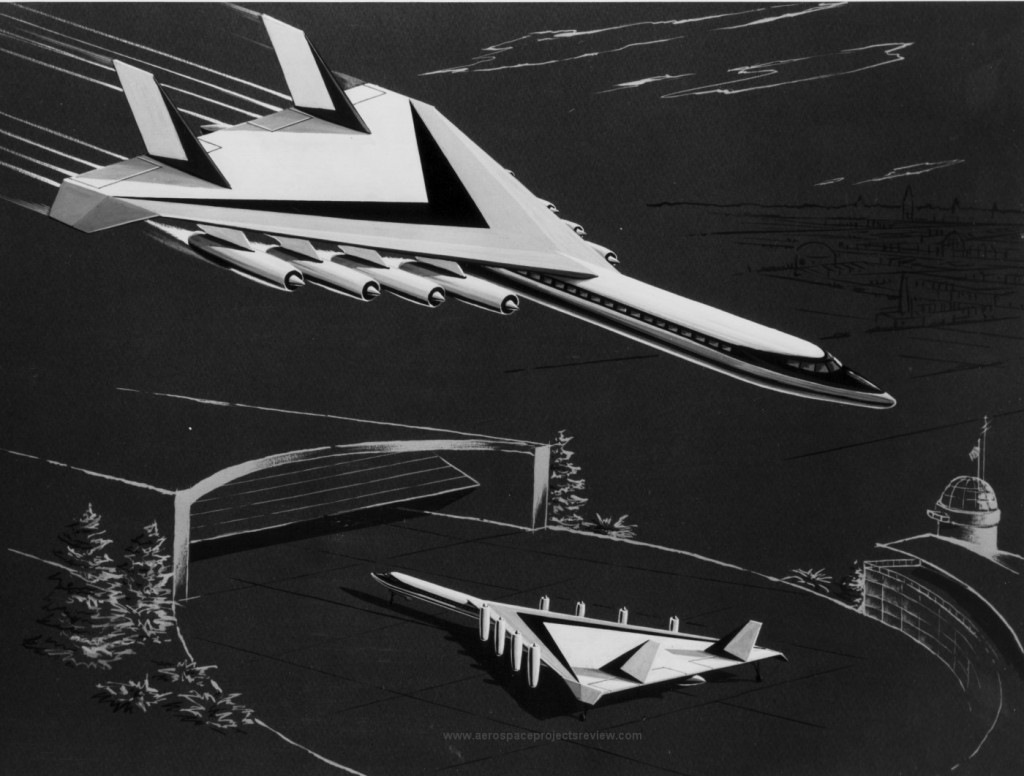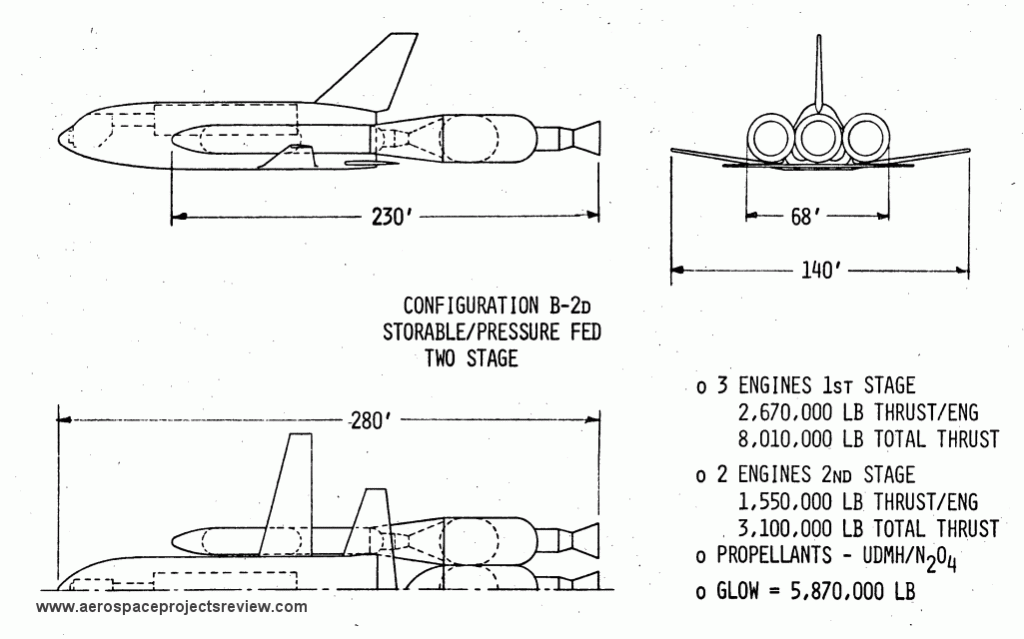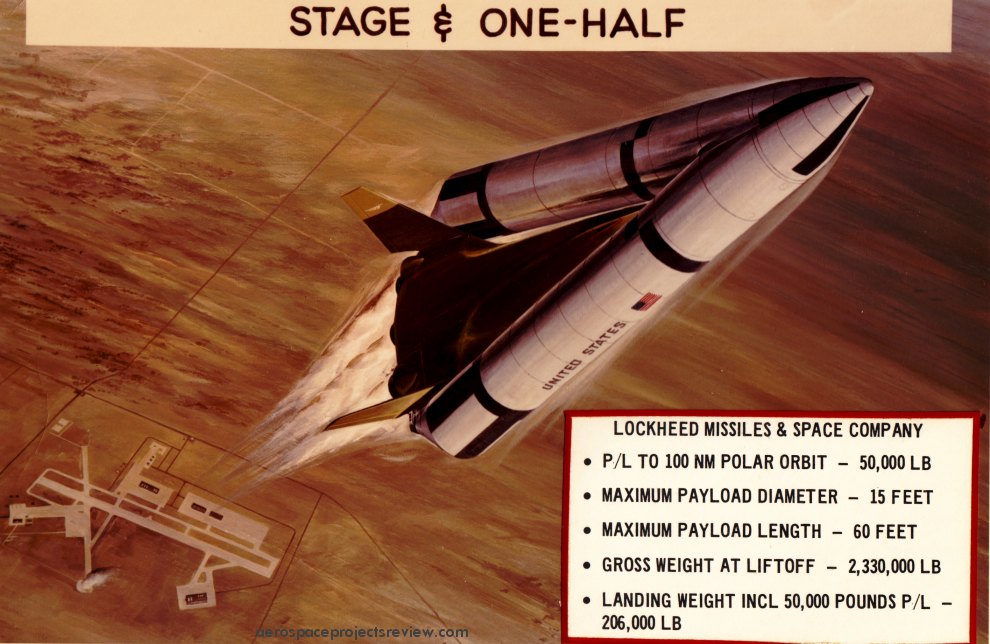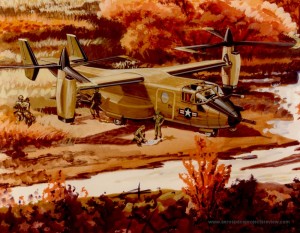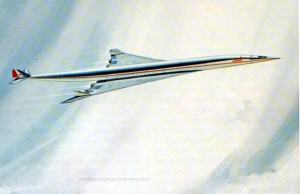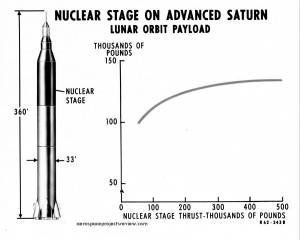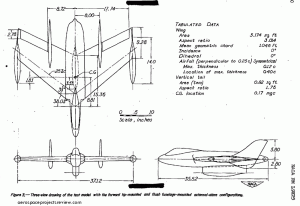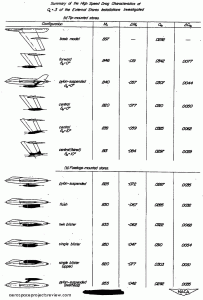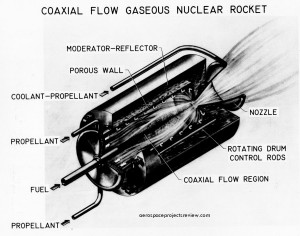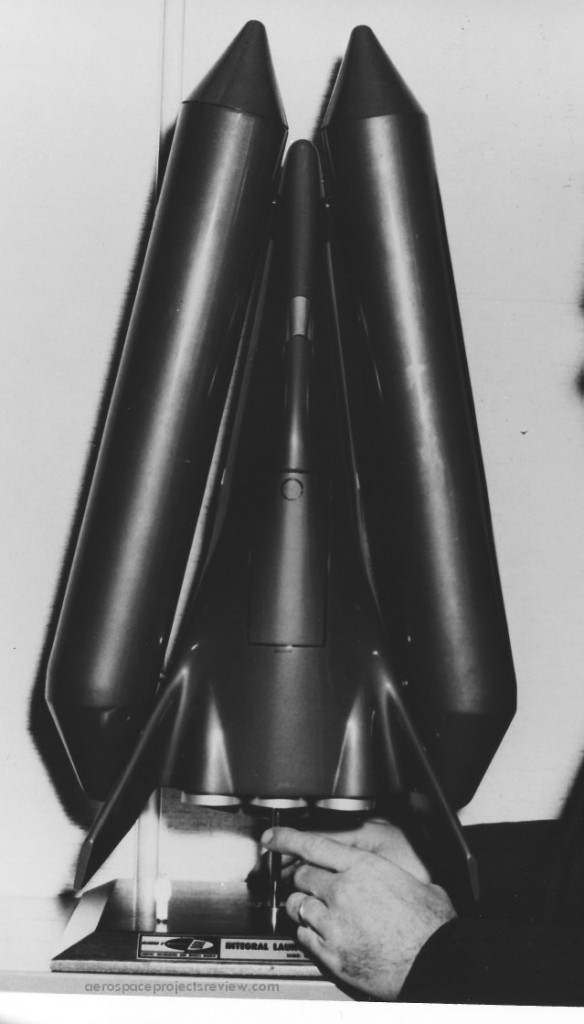A 1960’s concept painting from Bell depicting a vertical takeoff and landing supersonic transport. The eight individually podded turbojet engines were hinged so that they could rotate upwards at least 90 degrees, providing vertical thrust. It’s far from certain that this was an actual engineering effort as opposed to pure artistic marketing. Exactly what benefit there would be in a VTOL SST is anyones guest.
A Grumman alternate Space Shuttle concept with a low cross range orbiter and a series of pressue-fed storable-propellant rockets for the first and second stages. Pressure-fed boosters like this are heavy and relatively low-performance, but also relatively simple and cheap. The heavy construction required for the large high-pressure tanks makes them readily recoverable and refurbishable.
Artwork (via the NASA HQ History Office) of the Lockheed STAR Clipper. This was an early stage-and-a-half concept with a reusable orbiter and expendable propellant tanks. Vastly more info on this is available in APR issue V3N2.
The OPEC oil embargo of the west of 1973-74 and subsequent skyrocketing of petroleum prices made sure that the American SST program, cancelled by Congress in 1971, stayed cancelled. As Concord subsequently showed, an SST in an era of expensive aviation fuel would be an economic disaster.
In the late 1970’s there was a flirtation in the American aviation industry with liquid hydrogen as an alternate fuel for jetliners. LH2 would pose a number of issues, not least of which being the very low density of the stuff; relatively gigantic heavily insulated fuel tanks would be needed. For subsonic jetliner designs, these tanks often took the shape of extremely large fuel tanks on the wings, nearly the size of the aircraft fuselage. This was not much of an option for supersonic transports due to the increased drag. Nevertheless, liquid hydrogen fueled supersonic transports were designed. One such is shown below, a late 1970’s Lockheed design. The liquid hydrogen tanks occupy much of the forward and aft fuselage volume; the passengers are stuck in a relatively short segment in the middle of the double-deck fuselage. There would be no direct connection between the passenger compartment and the cockpit… so at the very least, the likelihood of a hijacking – another feature of air travel in the late 1970’s – would be greatly reduced.
By the 1980s, efforts to wean the west off OPEC petroleum were bearing fruit (or at least looking promising); as a result, the price of oil plummeted. And with cheap oil the imperative to design hydrogen-fueled aircraft largely vanished.
In 1949, the Langley Aeronautical laboratory of the NACA studied external stores (apparently fuel tanks) configurations for the Vought F7U Cutlass. A wide and occasionally unusual range of layouts was considered. As it happened, the Cutlass was a disaster of an airplane, with low powered engines prone to flameout in the rain and landing gear prone to collapse. The Cutlass did not last long and a surprising fraction were destroyed in crashes.
Conventional nuclear thermal rockets such as the NERVA can have a specific impulse of around 900 seconds, about twice what you can get from conventional chemical rocket engines. That’s good, but it’s also really low compared to what could be obtained from nuclear thermal systems. Solid core NTR’s have core temperatures substantially cooler than what you’d see in, say, an SSME, and for good reason: the core would soften and fail if it got much hotter. Thus the reason for the high performance of NTR’s is not due to high temperature, but to low molecular weight of the propellant (pure hydrogen, rather than water vapor for the SSME). But what if the core wasn’t limited to the low temperature of an NTR?
One way to do that is the gas-core engine. Here the uranium is allowed to not only melt, but to vaporize. It it retrained in the engine, typically, by spinning the engine or at leas the vapor. Thus the dense uranium vapor is spun out to the walls of the engine, and the much lighter hydrogen propellant is in the core. The keep the walls of the engine from melting, the hydrogen is first released into the engine from the walls themselves. The hydrogen bubbles up through the seething uranium gas, taking heat from the uranium as it does so.
Another approach is illustrated below, the Coaxial Flow Gaseous Nuclear Rocket. Here, instead of uranium spun to the walls, vaporized plutonium is retained along the centerline of the engine, with hydrogen flowing around it.
In these cases, specific impulses can get in the range of 5,000 seconds. But the problems with these designs were many. Startup and shutdown would have been lengthy and complicated processes. In the best cases, some of the fissionable gas would have escaped, meaning excess would need to be carried. In the coaxial system, it’s not entirely clear just *how* the hydrogen was to keep the plutonium vapor in place.
Another photo (via the NASA HQ History Office) of the Lockheed STAR Clipper. This was an early stage-and-a-half concept with a reusable orbiter and expendable propellant tanks. Vastly more info on this is available in APR issue V3N2.
